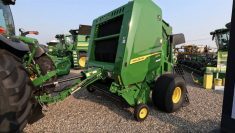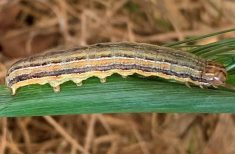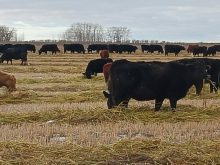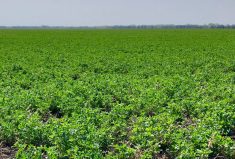A former Alberta provincial forage and livestock business specialist, now working with seed supplier Union Forage, Grant Lastiwka has studied forages in grazing systems for a long time.
Over that time, he’s found certain legumes can bring net benefits to pastures and forage stands — significant enough to outweigh the potential drawbacks.
Eleven years ago, he recalls now, “we started working with a new sainfoin variety, and also asked a number of producers grazing higher-legume pastures to work with (Alberta’s provincial) Agri-Profit$ program and keep their beef and pasture financial records.”
Read Also
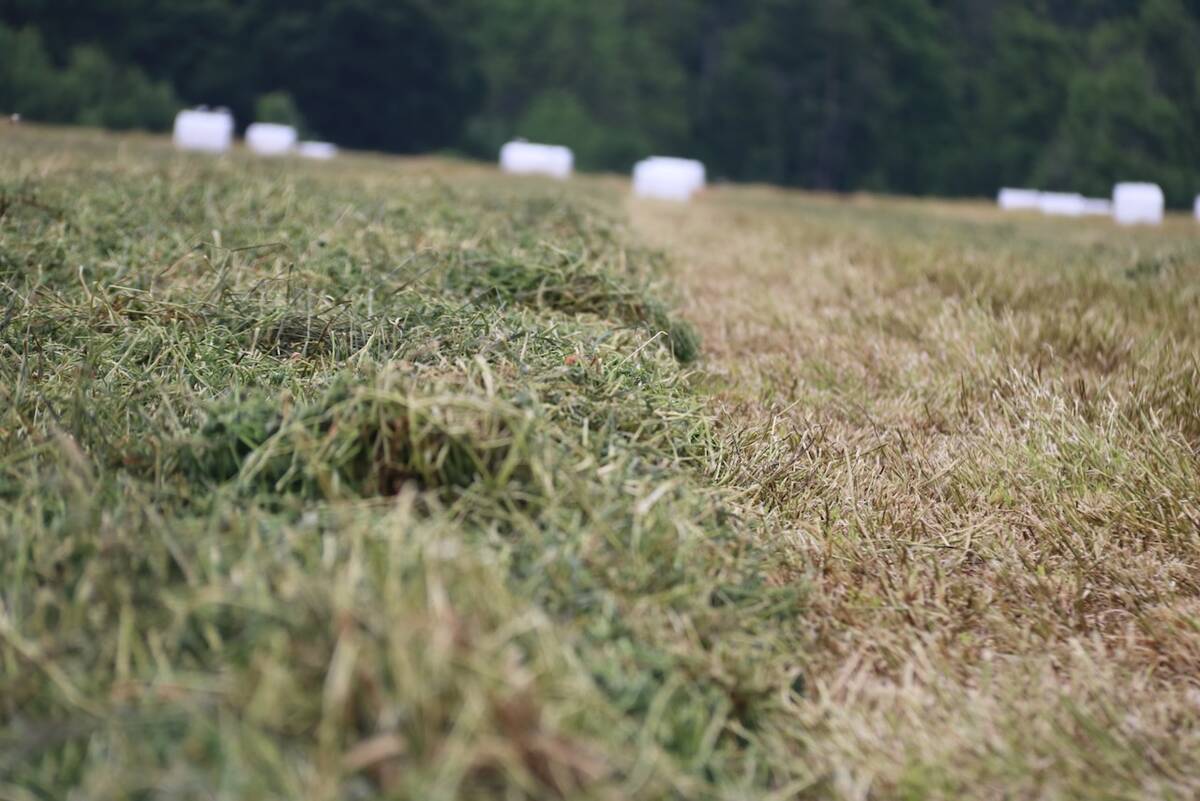
New high-performance forage training program to launch in 2026
A new Canadian Forage and Grasslands Asssociation high-performance forage program will be a resource for farmers, agronomists and others in the forage sector.
During that time Alberta provincial production economists Dale Kaliel, and later Anatoliy Oginskyy, had been analyzing Alberta cow-calf operations through Agri-Profit$. That analysis involved recording pasture productivity data as benchmarks.
“For three years Dale added these additional higher-legume grazing producers into the total data pool,” Lastiwka says, and the department worked with applied research and forage associations in seeding sainfoin-alfalfa mixtures in small plot trials.
“After three years of data collection from these plots and producer data from regular- and higher-legume mix pastures, we saw that most higher-legume grass pastures were significantly more productive and profitable than grass pastures,” Lastiwka says now.
Several local producers in those associations wanted in on the next step of the research, he says, leading to 12 sites of about 10 acres each in Alberta and one in B.C. with the Peace River Forage Association, seeded with a mixture of sainfoin, alfalfa and grasses.
To “feed the grazing system,” so to speak, it’s important to have a legume in a pasture, Lastiwka says. “It improves the animal/plant nutrient cycling, forage quality, animal performance and grazing stability later into the season.”

With that in mind, the specialists began to look at new sainfoin cultivars and those varieties’ ability to regrow, compared with alfalfa.
“Since sainfoin can set seed so easily, it has the ability to create a soil seed bank; there is opportunity for regeneration from seed,” he says. “If a producer lets the plants go to seed now and then, there’s less need to reseed a pasture. This can work with many legumes, though alfalfa is harder to do this with.”
In earlier studies tied to the Year Round Grazing project (2006), Lastiwka and colleagues had found the productivity of Alberta’s perennial pastures to be disappointing. “We decided that the next stage would be looking at improving pastures with legumes.”
‘Made sense’
That said, the practice of rotational managed grazing had already been picking up support and adoption since the early ’80s, starting with advice from Allan Savory’s Holistic Resource Management, Stan Parsons’ Ranching for Profit, and producer-driven forage associations.
Thus, in Alberta, “there was a strong following for rest and recovery,” Lastiwka says.
“My brother (Benny) and I in 1987 divided hayfields (containing a lot of alfalfa) and started grazing them. We saw a 99-pound increase in our calf weights due to the higher legume content of the forage and better management of the forage growth.”
In other words, “it made sense to include more legumes in pastures,” he says.
The sainfoin project, he says, came about because Gordon Hutton, an Alberta Agriculture forage and business specialist at the time, “came to me after he’d been given a directive to do a business project on forages, and wondered what we should focus on.”
Lastiwka said he thought the project should focus on sainfoin — “because we needed to showcase the Canadian forage breeding programs which were not well supported.”
READ MORE: Going beyond grass: The case for forage legumes
Those breeding programs had developed several improved and non-bloating cultivars of legumes, such as Oxley II and AC Veldt cicer milkvetch, AC Bruce birdsfoot trefoil and AAC Mountainview and AAC Glenview sainfoin.
“The biggest reason people don’t include legumes in pastures is fear of bloat. This is something we needed to overcome,” Lastiwka says. Thus, “we jumped on the bandwagon to study sainfoin in our higher-legume pastures project.”
For the project, dubbed ‘Retrofitting Existing Pastures with Canadian-Bred Non-Bloating Legumes,’ the last phase was sod seeding, he recalls.
“If someone asked about putting some alfalfa in there, I told them to go ahead — because management is a key part of whether bloat is a problem or not. If you have a mix of grasses and legumes — some non-bloating legumes along with the bloating legumes — the dilution effect, allowing for more maturity and good management, can prevent bloat,” he says.
Anyone participating in the project could pick what they wanted to plant, he adds. “We were pushing for sainfoin to be included, along with cicer milkvetch, birdsfoot trefoil et cetera, but bloat-potential legumes like red clover, alsike clover, purple or yellow-blossom alfalfa were also encouraged.”

The benefits of sainfoin will always be complicated, however, by its seed size — almost seven times larger than alfalfa seed — which makes it a difficult sell for producers to include in their pasture mixes.
“It has only about 30,000 seeds per pound versus 200,000 seeds per pound with alfalfa. When buying seed and wanting sainfoin to be a large part of a total mix, most producers balk at paying that much money,” Lastiwka says.
Crop producers have been well covered for financial loss, given recent high grain prices and the availability of good crop insurance — but cattle prices have not been high until lately.
As a result, “forage acres have more risk. The total acres of forage in Canada have dropped dramatically and beef cattle numbers are falling.”
Into that context — as well as an ongoing drought — the federal government set up the OFCAF (On-Farm Climate Action Fund), Lastiwka says.
OFCAF is meant to support farmers in adopting beneficial management practices that store carbon and reduce greenhouse gases — specifically in areas such as nitrogen management, cover cropping, rotational grazing and higher-legume forage stands — while providing other environmental benefits such as improved biodiversity and soil health.
Last year, along came the federal/provincial Resilient Agriculture Landscape Program, Lastiwka adds.
“Now producers have funding for adding more legumes to pastures — 51 per cent legumes in pastures. The struggle last year, however, was drought, but we are again slowly making progress,” he says.
‘Growing like crazy’
All this amounts to opportunity — namely, the opportunity to get a message across about the benefits of higher levels of legumes in a pasture mix.
“A challenge is still which legumes are best for your own land, grazing plans, and management situation, and cost of seed,” Lastiwka says. “Because of the large size of sainfoin seed, it continues to be used at low rates in legume mixtures and many people don’t try to purchase improved varieties.”
The seed industry puts the percentage of total seed weight of each component of a mix on a bag label. Thus, “if the label says 50 per cent sainfoin, because of large seed size, this translates in sainfoin to only about 20 per cent of a stand in the field,” he says.

“For the highest productivity in moderately dry to moister areas, we can graze pastures quickly in the spring or early summer, taking about a quarter to a third of it, because they are growing like crazy. Then we can come back again for a second or maybe even a third graze in moister climates, after it has had a chance to adequately regrow.
“At our farm, with my second grazing in September or later, most legumes have some seed set. I graze that second pass hard. The grazing activity of cattle, consuming and defecating viable seed, can spread legume seeds (or trample them into the soil) as another planting.”
Seeds of several legumes can also be fed to cattle by mixing the seed into their mineral. “This is a low-cost seeding method for adding legumes to grass pastures. I have used this mix and find that after the manure starts to break down, sainfoin and other legume seedlings emerge from the manure,” Lastiwka says.
Sainfoin can be included in a lot of stands, but many producers don’t yet know enough about it. “Some don’t want to gamble and take the risks, since it is expensive, but with support from these recent programs, I hope more people will be willing to try it, and manage for its success.”
‘Paid to plant’
Lastiwka still has sainfoin in his own older stand, though he acknowledges he didn’t plant the best variety. “I seeded our project a year before some of the newly selected sainfoin varieties were available.”
Given that the uptake of new varieties is based on projections of how much a company can sell, will enough people buy it to cover the cost of producing it?
“Trying to meet those needs, economically and competitively, makes a difference in how many new Canadian forage varieties are available for producers. Now should be a time we could utilize a lot of sainfoin, with the new government programs, because people will be paid to plant high-legume pastures as long as they are over 50 per cent legumes,” Lastiwka says.
Lastiwka’s own pasture, planted in 2011, still has 50 per cent legume — and different kinds, at that. “The low land is bird’s foot trefoil and alsike clover plus grasses. Much of the upper land is yellow-blossom alfalfa, cicer milkvetch and grasses. My less-suitable sainfoin variety is only present in small amounts.”
Sainfoin breeding by Dr. Hari Poudel at Agriculture and Agri-Food Canada in Lethbridge remains ongoing, Lastiwka notes. Breeding of cicer milkvetch and alfalfas and grasses continues at the University of Saskatchewan, as does work with clovers and birdsfoot trefoil and hardier alfalfas in Nova Scotia and Quebec.
“Since there is still Canadian legume breeding going on, we need to keep making an effort to get newly released varieties into the right hands for producer use.”




